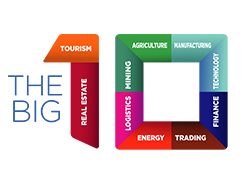Africa stands at a crucial crossroads. As one of the fastest-growing continents in terms of population and economic potential, the drive for development is accelerating across nations. Infrastructure projects, urbanization, industrialization, and energy demand are all on the rise — marking a hopeful path toward prosperity. Yet, alongside these ambitions, Africa faces mounting sustainability challenges.
The core question arises: How can the continent balance rapid growth with environmental protection and climate resilience?
This article explores the key sustainability challenges in Africa and how governments, businesses, and communities can bridge the gap between development and environmental stewardship.
The Urgency of Africa’s Sustainability Dilemma
Africa is home to 17% of the world’s population but contributes only about 3–4% of global greenhouse gas emissions. Despite its relatively low emissions, it is disproportionately vulnerable to climate change, experiencing the devastating effects of droughts, floods, desertification, and biodiversity loss.
Meanwhile, as countries aim to achieve the UN Sustainable Development Goals (SDGs), there is increasing pressure to reduce poverty, expand energy access, and create jobs — all while preserving the environment.
Key Sustainability Challenges Across the Continent
1. Deforestation and Land Degradation
Africa loses approximately 4 million hectares of forest annually, primarily due to agricultural expansion, logging, and fuelwood collection. This threatens biodiversity, soil health, and local livelihoods. Land degradation also reduces agricultural productivity and worsens food insecurity.
2. Energy Access vs. Clean Energy Transition
Over 600 million people in sub-Saharan Africa lack access to electricity. Expanding energy infrastructure is essential for development, yet the challenge lies in choosing sustainable energy sources over short-term fossil fuel solutions like diesel generators and coal.
3. Waste Management and Urban Pollution
Rapid urban growth has overwhelmed many cities’ waste management systems. Open dumping and burning of waste cause air and water pollution, while plastics choke ecosystems. Inadequate sanitation infrastructure in growing urban centers also poses public health risks.
4. Water Scarcity and Resource Management
Africa faces increasing water stress due to climate change, population growth, and poor resource management. In regions like the Sahel and the Horn of Africa, water scarcity fuels conflict, migration, and economic stagnation.
5. Climate Adaptation and Resilience
Many African economies depend heavily on agriculture, which is highly sensitive to climate variability. Smallholder farmers lack access to climate-resilient tools, insurance, and modern irrigation — making them vulnerable to extreme weather and crop failure.
Bridging the Gap: Pathways to Sustainable Growth
Despite these challenges, Africa has immense opportunities to become a leader in green development — if the right investments, policies, and partnerships are in place.
1. Scaling Renewable Energy
Africa has abundant solar, wind, hydro, and geothermal resources. Initiatives like the Desert to Power project and the Africa Renewable Energy Initiative (AREI) aim to deliver clean, affordable electricity while reducing emissions and creating jobs.
2. Promoting Circular Economy Models
Innovative startups and community-led programs are tackling waste through recycling, upcycling, and sustainable design. Governments can accelerate this shift by creating incentives for green manufacturing and banning single-use plastics.
3. Investing in Sustainable Agriculture
Agri-tech solutions like drought-resistant seeds, digital farming tools, and climate-smart irrigation can enhance food security while conserving land and water. Supporting local agroecology practices also builds resilience and biodiversity.
4. Urban Planning and Green Infrastructure
Future-proofing African cities requires investment in green spaces, efficient public transport, waste-to-energy systems, and eco-friendly housing. Smart city frameworks can integrate sustainability into the urban design process.
5. Stronger Environmental Governance
Stronger environmental policies, enforcement mechanisms, and public-private partnerships are critical. International funding, such as climate finance and green bonds, can help bridge infrastructure gaps while supporting low-carbon development.
The Role of Youth, Innovation, and Global Support
Africa’s youth population — the youngest in the world — represents a powerful force for change. Education, digital literacy, and entrepreneurship can empower the next generation to lead climate action and green innovation.
Moreover, global cooperation is essential. Developed nations must honor climate finance pledges and facilitate technology transfer, while multilateral institutions can support capacity-building and resilient infrastructure projects.
Conclusion: A Green Growth Vision for Africa
Africa’s path to sustainability is not about choosing between growth and the environment — it’s about integrating both through inclusive, forward-thinking strategies. The continent has the chance to leapfrog outdated, carbon-intensive models and embrace a greener, more equitable future.
With bold leadership, grassroots innovation, and global collaboration, Africa can bridge the gap between ambition and action — becoming not just a participant, but a pioneer in sustainable development for the 21st century.
Read more on The Big 10:
Why Women’s Leadership in Sustainability Matters
Sustainable Agriculture: Global Trends in Food Production and Climate-Smart Farming
Climate Change and Africa: How Businesses are Adapting to a Changing Environment


